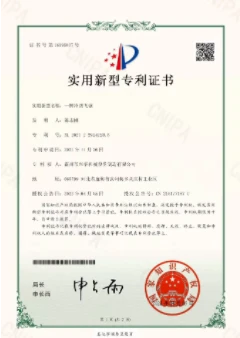cold roll forming
Cold Roll Forming An Overview of the Process and Its Applications
Cold roll forming, also known simply as roll forming, is a manufacturing process that transforms metal sheets or strips into specific shapes and profiles without the application of heat. This method is widely recognized for its efficiency, precision, and versatility, making it an integral part of various industries such as construction, automotive, and manufacturing.
The Cold Roll Forming Process
The cold roll forming process begins with a flat metal strip, usually made of materials like steel, aluminum, or copper, which is fed through a series of rollers. These rollers are precisely engineered to bend and shape the metal gradually as it passes through the forming stands. Unlike traditional methods that involve cutting and welding, cold roll forming maintains the integrity of the metal, resulting in strong, durable profiles.
The process can produce a wide range of shapes, including U-channels, C-channels, Z-sections, and special profiles tailored to specific applications. One of the significant advantages of cold roll forming is its ability to produce parts with a consistent cross-section along a considerable length, making it ideal for long runs of identical components.
Advantages of Cold Roll Forming
1. Efficiency Cold roll forming is typically faster than other metal forming processes, which reduces production time and labor costs. The ability to create complex shapes in a continuous manner means higher output rates.
2. Material Conservation Since the formation is carried out without cutting, cold roll forming minimizes material waste, thereby reducing costs and environmental impact. The process can also be performed with thinner materials, further optimizing material usage.
3. High Precision and Tolerances The use of rollers allows for tight tolerances and excellent surface finishes, enhancing the quality of the final product. This precision is particularly crucial in industries where specifications are stringent.
cold roll forming

4. Strength and Durability The cold forming process can increase the yield strength of the metal, as the material is work-hardened during the rolling process. As a result, the finished products are often stronger than those created through other methods.
5. Versatility Cold roll forming can be tailored to create a wide variety of profiles and shapes, accommodating different applications and design requirements. This versatility opens up possibilities across numerous sectors.
Applications of Cold Roll Forming
The versatility of cold roll forming means it is utilized in many fields. In the construction industry, cold-formed steel sections are often used in framing for buildings, bridges, and other structures. These sections provide excellent strength-to-weight ratios, essential for modern engineering.
In the automotive sector, cold roll formed components are used for everything from chassis parts to brackets, providing lightweight yet robust solutions that contribute to fuel efficiency while maintaining safety. Similarly, in the manufacturing industry, cold-formed parts are essential in producing machinery and equipment, where precision and reliability are vital.
Additionally, appliances often feature parts made from cold roll forming, such as HVAC ducts and structural components in refrigerators and washing machines. The electrical industry also benefits from this technology, using roll-formed metal components in cable management systems and various other applications.
Conclusion
Cold roll forming is a sophisticated manufacturing technique that delivers numerous benefits across a wide range of industries. Its efficiency, precision, and ability to create strong, lightweight components make it a preferred choice for many applications. As technology continues to advance, the potential for cold roll forming is likely to expand further, ensuring its position as a cornerstone in modern manufacturing. By embracing this innovative method, industries can achieve higher productivity while minimizing waste, ultimately contributing to more sustainable production practices.
-
High Frequency Straight Seam Welded Pipe Production Line|BzZhou Xinghua|Precision Welding&EfficiencyNewsJul.30,2025
-
High Frequency Straight Seam Welded Pipe Production Line - BzZhou Xinghua|Precision Engineering&EfficiencyNewsJul.30,2025
-
High-Frequency Straight Seam Welded Pipe Production Line-BzZhou Xinghua Machinery Equipment Manufacturing Co., LTD.NewsJul.30,2025
-
High-Frequency Straight Seam Welded Pipe Production Line-BzZhou Xinghua Machinery Equipment Manufacturing Co., LTD.|Precision Manufacturing, High EfficiencyNewsJul.30,2025
-
High Frequency Straight Seam Welded Pipe Production Line-BzZhou Xinghua Machinery Equipment Manufacturing Co., LTD.|Precision Steel Pipe Manufacturing&Industrial EfficiencyNewsJul.29,2025
-
High-Frequency Straight Seam Welded Pipe Production Line-BzZhou Xinghua Machinery Equipment Manufacturing Co., LTD.|Precision Steel Pipe Manufacturing&Industrial EfficiencyNewsJul.29,2025


